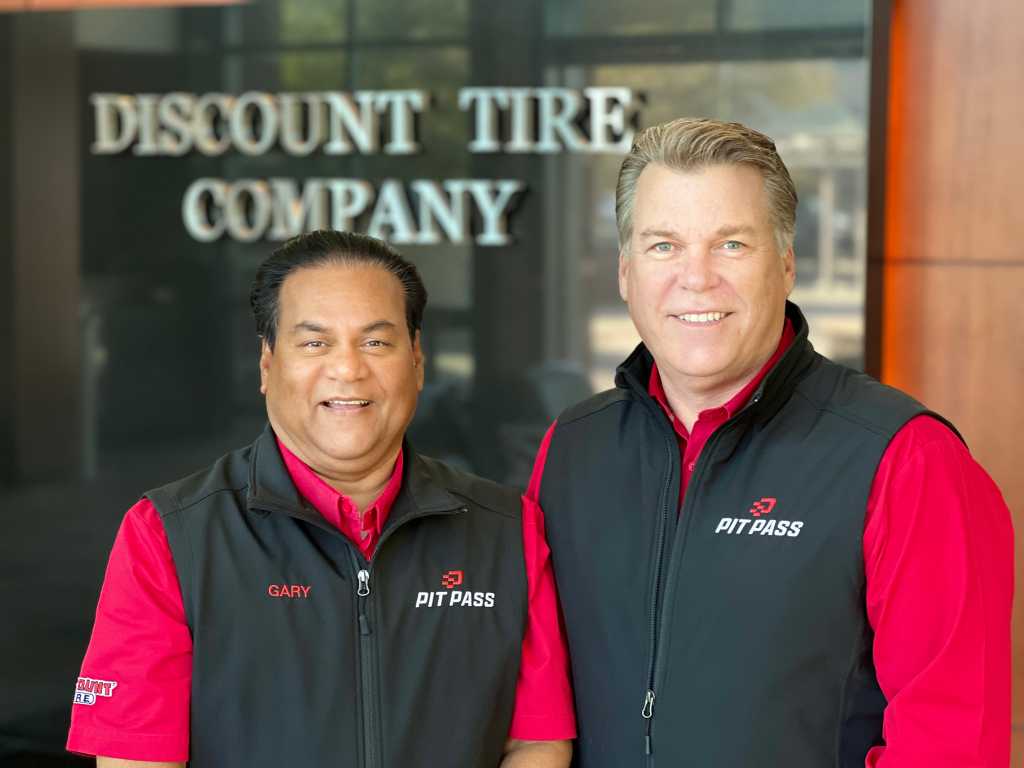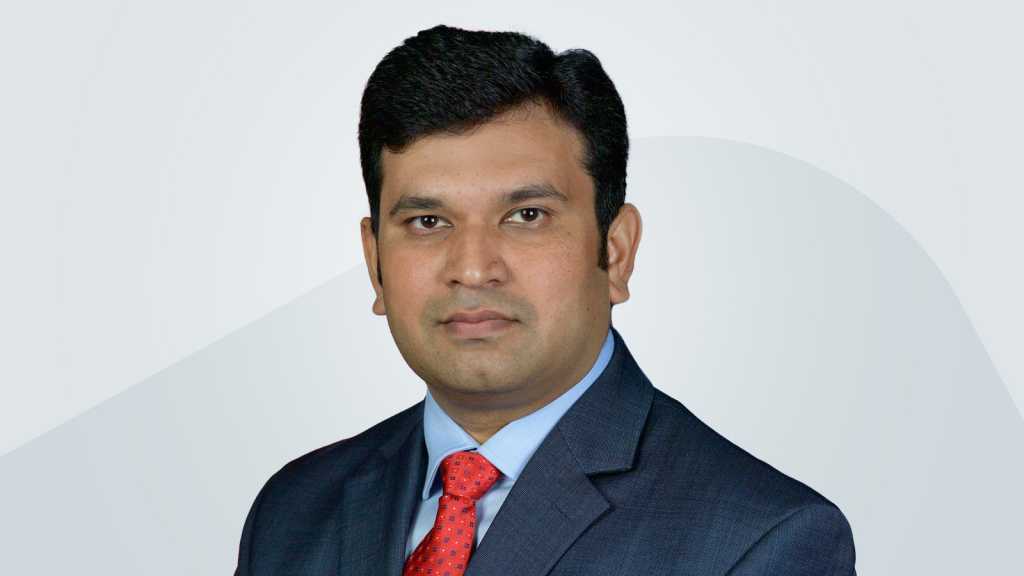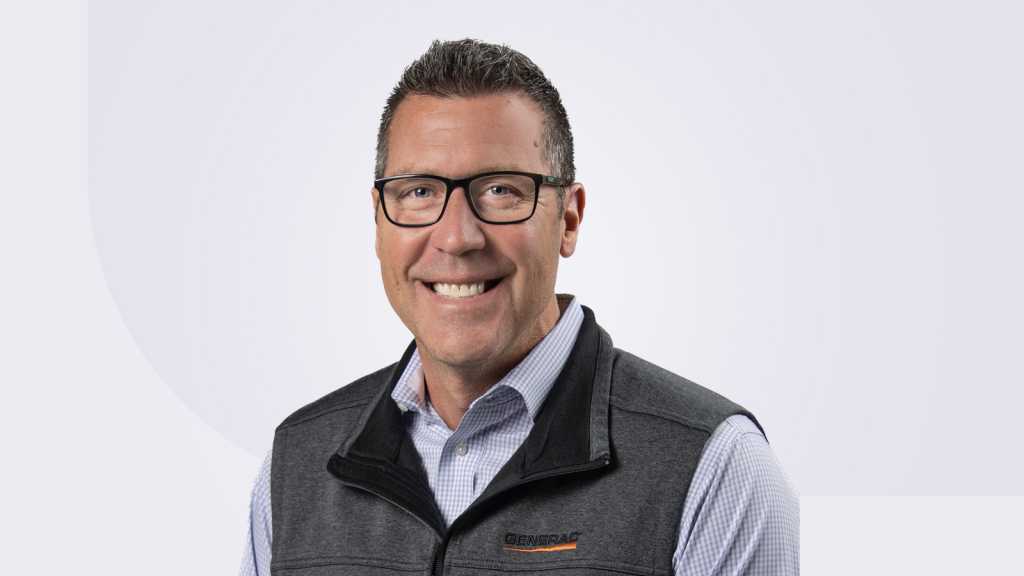- CISO’s Toolkit: Understanding Core Cybersecurity Frameworks
- UK Government Publishes Plan to Boost Cyber Sector Growth
- This LG C4 OLED TV is over 50% off on Amazon right now - and I highly recommend it
- 4 PC parts I'm buying to upgrade my computer (and the 7 I'm keeping)
- 8 steps to ensure data privacy compliance across borders
CIO 100 Award winners prove the transformative value of IT

In overseeing elections, local governments across the US are tasked with not only administering and counting votes but verifying the results — a process that has taken on heightened importance in recent years due to more intense election scrutiny.
Linda Gerull, city CIO, City and County of San Francisco
City and County of San Francisco
The vote verification process requires a thorough review of election results to demonstrate they’re accurate, and can include checking for errors or irregularities, such as incorrect ballet counts or issues with voting machines, as well as fraud that could undermine election integrity.
A risk-limiting audit (RLA) is one audit type used for election verification. RLAs determine precisely how much hand-counting is necessary to confirm election results to a given level of confidence. For example, the closer the contest, the more ballots that must be examined.
To fully automate its RLA process, the San Francisco Department of Elections partnered with the San Francisco Department of Technology. Linda Gerull, CIO for the City and County of San Francisco, and her team used a combination of in-house software, open-source programming, and expert algorithms to create an RLA platform capable of automatically auditing thousands of votes on-demand to verify results. The platform is also capable of auditing the city’s ranked-choice voting contests, making it the first such platform capable of doing so.
San Francisco’s IT effort “provides greater transparency to the public, minimizes human bias, and saves time,” Gerull says. “In increasingly politicized times, easily performing RLAs can provide a measure of confidence to the interested voter that elections are being run properly.”
For a look at how other CIO 100 Award winners are supporting fair elections, see “Los Angeles IT secures the vote with open source and the cloud.”
AI avatar helps CSN better engage students
Organization: College of Southern Nevada
Project: Digital President Zaragoza
IT Leader: Mugunth Vaithylingam, CIO
The College of Southern Nevada turned to cutting-edge technology — an avatar named Digital President Zaragoza (DPZ) and based on the real-life CSN president — to address academia’s longstanding need to engage students and improve their educational experience.

Mugunth Vaithylingam, CIO, College of Southern Nevada
College of Southern Nevada
Teams overseen by CSN CIO Mugunth Vaithylingam combined custom AI visuals, voice, and content to create this first-of-its-kind custom avatar, which is deployed and rendered from a web browser using client-side CPUs. The scalable avatar can have hundreds of thousands of conversations individually and simultaneously, and is highly customizable and interactive in real-time, thereby providing an immersive experience for each user.
Additionally, AI capabilities enable the avatar to adapt to various scenarios, respond to user input, and provide a human-like interaction. For example, it can learn and use students’ names and provide personalized information.
DPZ captures, ingests, organizes, and acts on disparate information seamlessly, allowing for frictionless brand interaction across all student touchpoints. Moreover, it can communicate with students through web and mobile devices.
“It helps us address the challenges that large community colleges face in providing real-time support and guidance to students,” Vaithylingam says. “Especially in an era when mobile connectedness is ubiquitous, our current generation of students need the ability to get help and have somewhere to go when they feel overwhelmed right from where they are.”
Vaithylingam adds: “I am proud of the fact that we were able to create a tool that has the potential to make a real difference in the lives of students.”
With the avatar deployed, CSN officials plan to measure whether Digital President Zaragoza improves student engagement, learning outcomes, student satisfaction, retention, and accessibility, in addition to producing time and costs savings.
Discount Tire re-engineers its customer experience
Organization: Discount Tire
Project: Discount Tire Pit Pass
IT Leader: Gary Desai, EVP and CIO
Discount Tire’s Pit Pass is a new store concept that uses technology to put the customer at the center of the tire-buying experience — and in the process also brings value to employees and the company itself.

Gary Desai (EVP and CIO) and Tom Williams (Chief Experience Officer), Discount Tire
Gary Desai and Tom Williams / Discount Tire
Pit Pass store customers can order tires online, schedule an installation appointment, and then complete the sale and installation process via a drive-through lane.
The technologies powering this new customer journey include tire scanners and cameras that evaluate tire tread depth and condition; digital displays that guide customers into specific work bays and offer work updates; and handheld devices that enable store associates to communicate completion of services.
Revised back-store applications support this digital-first approach.
To deliver this transformative product, EVP and CIO Guy Desai focused on developing a minimum viable project and fostering cross-functional collaboration, mobilizing a team that leveraged user-centered design to develop new archetypes, personas, and “to-be” journey flows.
The launch of the first Pit Pass store, located in the Atlanta area, represents a pivot from a traditional brick-and-mortar retailer to a robust omnichannel brand, enabling Discount Tire to provide a more seamless, intuitive customer experience with intelligent workflows that cut down on store visit times.
The project also ensures technicians’ comfort and safety as they service customers. And it yields multiple business metric improvements, such as limiting surplus inventory. Moreover, Pit Pass has helped shape the company’s roadmap for its future, says Chris Chapman, company vice president of IT store technology at Discount Tire.
“First, it shows that Discount Tire is willing to invest in creative and innovative new ways to engage with our customers. Second, this new store model will allow Discount Tire to enter markets/locations where land and construction costs are at a premium and still provide our customers with a world-class experience,” Chapman says.
For more about Discount Tire’s Pit Pass project, see “Discount Tire tunes IT to reinvent customer experience.”
US DoT digitizes vehicle safety inspections
Organization: Federal Motor Carrier Safety Administration, US Department of Transportation
Project: SafeSpect: Digitizing Safety Inspections of Commercial Vehicles
IT Leader: Pavan Pidugu, CTO
In collaboration with state partners, the Federal Motor Carrier Safety Administration (FMCSA) conducts approximately 3.5 million vehicle inspections across the US annually.

Pavan Pidugu, CTO, FMCSA, US Department of Transportation
US Department of Transportation
For many years, the 18,000 safety and law enforcement officers conducting those inspections had to navigate nine separate applications, usually while working in the field, often at the side of a highway — a situation FMCSA officials recognized was ripe for digital transformation and an improved employee experience.
“We wanted to provide a safer way for safety enforcements,” says FMCSA CTO Pavan Pidugu, who, working with the CIO and FMCSA leadership, focused on delivering a new inspection system quickly.
Beginning with information-gathering sessions with stakeholders to define the problems and needs, the Office of the CTO (OCTO) leveraged human-centered design principles and agile development principles to pilot SafeSpect within five months of the project kickoff date.
SafeSpect is the only device-agnostic web-based inspection platform in the market that works with or without connectivity. It features a single pane of view into all relevant information about the motor carrier, vehicle, and driver being inspected, thereby enabling inspectors to make quick data-driven decisions.
Moreover, the application flow and logic streamline information capture by eliminating redundancy and conflicts. It also allows inspectors to tailor the experience to their usage, carry an input device to the point of inspection to eliminate transcription errors, and input information with minimal keystrokes to minimize errors and inconsistencies.
During the pilot, the SafeSpect team observed a 60% improvement in time to complete and submit a Level 3 inspection for approval.
OCTO continues to add new capabilities and features to SafeSpect, and Pidugu says his office is exploring whether SafeSpect could be used for other types of inspections.
Generac transforms its business with data
Organization: Generac Power Systems
Project: PowerInsights
IT Leader: Tim Dickson, CIO
After arriving at Generac Power Systems as its new CIO, Tim Dickson hosted the company’s first-ever hackathon to upskill IT employees and evaluate the team. But the event yielded an even bigger result in form of PowerInsights, an interactive geospatial visualization, analytics, and AI tool that helps the company identify potential new customers and offer other new market opportunities.

Tim Dickson, CIO, Generac Power Systems
Generac Power Systems
PowerInsights is displayed on an 85-inch touch-screen TV in the company’s main lobby, allowing employees, executives, and visitors (including customers) to see and interact with the data. It can, for example, show where there’s idle power that a customer (such as a utility) might want to sell, and it also provides the company’s dealer network with a holistic view of their business and opportunities to expand.
The project has been transformative for Generac’s business.
“PowerInsights has helped the company evolve from a generator manufacturer into an energy technology solutions provider,” Dickson says.
As part of the hackathon, the IT team sought to achieve three things: to aggregate the company’s data into an enterprise data platform; to build an API that would provide business access to that data; and to develop a machine learning algorithm to provide insights on top of the aggregated IoT data.
The hackathon’s initial prototype proved all that was, indeed, technically possible, and it soon evolved into a formal program that produced PowerInsights.
In addition to delivering full visibility of assets across the company, PowerInsights also features an AI model called PowerScore, which helps the company’s sales and marketing teams target potential customers with campaigns and promotions. Its two other AI models, Opportunity Score and Utility Score, provide additional insights about market opportunities.
For a deeper look at PowerInsights, see “Generac powers business transformation with data, AI.”
Great Wolf Resorts goes digital to enhance guest experience
Organization: Great Wolf Resorts
Project: Project Darwin
IT Leader: Ramki Srinivasan, CDIO
Great Wolf Resorts experienced 40% growth during the past five years, with the company expanding its footprint as well as the number of guests it hosts. The company expects 60% growth to its waterpark-themed resorts in the next three years.

Ramki Srinivasan, CDIO, Great Wolf Resorts
Great Wolf Resorts
In response, IT — working collaboratively with operations and other functional groups — created a multipronged initiative aimed at delivering more digital experiences for both guests and employees.
The initiative’s deliverables include new on-site kiosks as well as new and redesigned mobile capabilities to provide contactless services, such as digital check-in and food ordering.
Another deliverable uses artificial intelligence to support the company’s lifeguards; here, IT delivered cameras that use AI to monitor waterparks and identify potential safety issues, with the goal of further improving guard response times.
IT also deployed robotic process automation (RPA) and modernized manual legacy workflows via a migration to cloud platforms.
Chief Digital and Information Officer Ramki Srinivasan says Project Darwin focused on enabling employees “to take care of guests more effectively and efficiently” while also improving the experience for workers, too.
“We’re making a lot of progress addressing those goals,” he says, noting that the project has helped cut costs and boost revenue, too.
For example, the new mobile food-ordering capabilities are delivering check sizes 50% over walk-in orders. And automation has eliminated 50,000 hours of skilled labor annually, with future workflow automation set to eliminate even more.
Srinivasan says the initiative is critical to company’s growth objectives, too. The combination of automating workflows, adding digital self-service capabilities, and modernizing legacy applications means workers have been able to shed low-value manual tasks and can focus on higher-value ones. That not only improves the customer experience but increases worker efficiency. As Srinivasan explains: “We cannot have the growth and scale that we have planned without these enhancements.”
Machine learning helps Novant Health improve suicide prevention
Organization: Novant Health
Project: Behavioral Health Acuity Risk model for suicide prevention through clinical interventions
IT Leader: Karen Hegarty, VP Cognitive Computing
When it comes to suicide prevention, a key issue is identifying patients in need. The Columbia-Suicide Severity Rating Scale (C-SSRS), a manual screening tool that relies on a patient’s willingness to express having suicidal thoughts, can be challenged in this area, and so the team at Novant Health sought to develop a better approach to discovering potential suicidal ideation.

Karen Hegarty, VP of cognitive computing, Novant Health
Novant Health
Karen Hegarty, vice president of cognitive computing at Novant Health, and her team partnered with clinicians from mental health, emergency medicine, and psychiatry to create an automatic and data-driven predictive model that examines information from a patient’s medical record to assess the likelihood of suicidal behavior.
The Behavioral Health Acuity Risk (BHAR) model leverages a machine learning technique called random forests, which can be natively hosted in the electronic health record and updated in near-real time, with results immediately available to clinical staff.
“This work enables our care team to identify potential suicidal ideations and engage with the patient in a meaningful and caring way,” Hegarty says.
To build the BHAR model, the Novant Health team used historical data from its electronic health records (EHR) system as well as data from external sources.
The BHAR model provides clinicians with a real-time assessment of risk in the form of a percentage and color-coded low/medium/high range, all of which is visible in the patient’s EHR.
The tech team’s partnership with clinical teams helped build trust in the model’s accuracy and effectiveness among caregivers. And that partnership along with a human-centered approach to implementing BHAR ensured that the tool fit within clinical workflows.
“The work paid off, and we are seeing a real impact on our patients, their care, and their lives,” Hegarty says, noting that Novant Health plans to share the model so that other healthcare systems can implement it to benefit their patients.
Oshkosh tracks manufacturing assets with IoT
Organization: Oshkosh Corp.
Project: Improving Manufacturing Efficiency through IoT Enabled Asset Tracking
IT Leader: Anu Khare, SVP & CIO
Oshkosh Corp., maker of specialty vehicles and access equipment, had challenges in its ability to locate parts, vehicles, and tooling — challenges that created a barrier to greater production efficiency.

Anu Khare, senior vice president and CIO, Oshkosh Corp.
Anu Khare / Oshkosh Corp.
To tackle that problem, Oshkosh IT partnered with manufacturing to build and implement an IoT-enabled asset-tracking capability that enables real-time identification of critical tools, parts, and equipment in 3D space with accuracy within 12 inches. The platform, which can also track asset movement over time to inform material-flow improvements, works through a grid of wireless Bluetooth satellite nodes installed inside Oshkosh’s manufacturing facility, and each of the company’s assets are tagged with Bluetooth transmitters.
The solution operates similar to a GPS system, but it is localized within the shop floor, is more secure, uses less energy, and costs less than GPS.
Manufacturing team members can see the geolocation of any part, tool, equipment, or vehicle with a visual representation of its coordinate in 3D space. An interactive dashboard with mobile capabilities enables team members to view satellite health, each tagged asset with real-time location at the specified site, and heatmap data collected over a specified time range.
The system effectively automates 3,750 hours annually in just one of Oshkosh’s facilities, time previously spent searching for critical tools and parts, says Anu Khare, senior vice president and CIO. That in turn allows workers “to focus on the manufacturing, resulting in improved efficiency,” he adds.
Furthermore, the system’s machine learning models deliver additional value by scanning asset location data for material-flow optimization.
The company continues to scale its use of this asset-tracking system and sees opportunities to use the technology in other areas of its operations.
“We are only scratching the surface of the tool’s capabilities,” Khare adds.
Reed Smith calls on AI to help shape legal teams
Organization: Reed Smith
Project: Smart Resourcing
IT Leader: Steven W. Agnoli, CIO
International law firm Reed Smith wanted to ensure that it was deploying the right resources to the right jobs in the most efficient manner to meet client needs.

Steven W. Agnoli, CIO, Reed Smith
Reed Smith
It also wanted to efficiently capture its lawyers’ expertise. And it sought to improve its ability to ensure that diverse lawyer teams would be fielded and successful in resolving client’s legal issues.
To meet those objectives, Reed Smith’s technology team created Smart Resourcing, which uses industry-leading processes and AI to provide decision support for staffing client engagements.
Smart Resourcing presents a holistic view into lawyer suitability for a particular piece of work and provides a clearer understanding of areas of utilization weakness, skills growth needs, and resourcing improvements, says firm CIO Steven W. Agnoli.
“Smart Resourcing makes information collection, validation, and sharing easy, and it brings a level of data accuracy, knowledge, and reporting that was not previously possible,” he adds.
Smart Resourcing includes in-house developed technology for allocating and tracking work requests, identifying skills development areas, and calculating diversity and inclusion metrics. Its AI model uses a combination of legal matter data and time worked to predict lawyer experience levels.
Benefits from the Smart Resourcing project include increased revenue due to quicker staffing of engagements with more appropriate resources, increased accuracy in the firm’s efforts to staff more diverse client work teams and its ability to report progress on staffing diverse teams to clients.
The project also brought a heightened awareness of the IT department’s ability to leverage emerging tech for the firm’s benefit, Agnoli says, adding, “The project has reimagined how teams of lawyers, administrators, and technologists work together to bring innovative thought to long-established processes.”
More US CIO 100 Award winners
The following articles provide an in-depth look at these and more of our 2023 US CIO 100 Award winning projects:
- Atlantic Health System: “Atlantic Health streamlines insurance authorization with intelligent automation”
Sunil Dadlani, Chief Information & Transformation Officer, CISO - Avnet: “How Avnet accelerates its product design process”
Max Chan, CIO - Belcorp: “Belcorp reimagines R&D with AI”
Venkat Gopalan, Chief Digital, Data & Technology Officer - CareSource: “How CareSource IT is addressing data interoperability challenges in healthcare”
Devon Valencia, CIO - CarMax: “CarMax drives business value with GPT-3.5”
Shamim Mohammad, EVP and Chief Information and Technology Officer - Cherokee Nation: “Cherokee Nation empowers its citizens with IT”
Paula Starr, CIO - Discount Tire: “Discount Tire tunes IT to reinvent customer experience”
Gary Desai, EVP and CIO - Dow: “Dow turns to AI to accelerate chemical search”
Nathan Wilmot, IT Director of Data Client Partnerships - Eastman: “How IT does business at Eastman”
Aldo Noseda, CIO - Generac: “Generac powers business transformation with data, AI”
Tim Dickson, CIO - Los Angeles County Registrar-Recorder/County Clerk: “Los Angeles IT secures the vote with open source and the cloud”
Aman Bhullar, CIO - Miami University: “Invoking IT to help revitalize Indigenous languages at risk of extinction”
David Seidl, VP of IT & CIO - PepsiCo: “PepsiCo IT redefines direct-to-store business model success”
Shyam Venkat, Sector CIO - Red Hat: “Red Hat embraces hybrid cloud for internal IT”
James Palermo, CIO - Sysco: “Sysco’s recipe for growth centers on IT”
Tom Peck, EVP and Chief Information and Digital Officer

